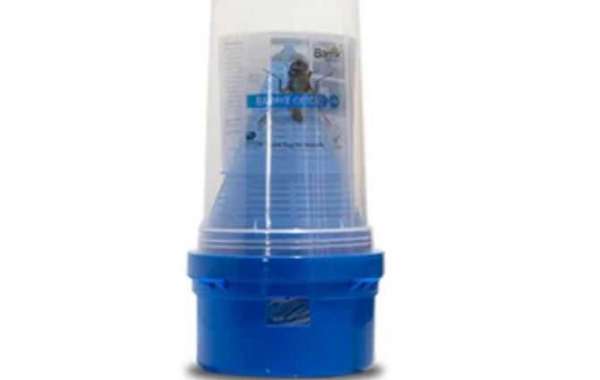These traps utilize the power of scent to lure pests away from their intended targets, offering a safe, eco-friendly, and highly effective means of pest control. In this comprehensive guide, we will explore everything you need to know about pheromone traps, including how they work, the types available, and their many benefits. Also, we’ll be understanding how traps lures.
Understanding Pheromone Traps: How Do They Work?
Pheromone traps are a sophisticated approach to pest management, taking inspiration from the intricate chemical communication systems that insects and other organisms use to interact with one another. Pheromones are chemical compounds that are naturally produced by various species to signal a wide range of messages, including mating, territory marking, and alarm signals. In the context of pest control, pheromone traps harness these chemical signals to manipulate the behavior of targeted pests.
The basic principle behind a pheromone trap is to mimic the scent of a desirable mate or food source to attract pests. Once the pests are lured into the trap, they are typically unable to escape, and their population is effectively controlled. Here's a breakdown of the key components and steps involved in pheromone traps:
1. Pheromone Lures: The Alluring Scent
At the heart of every pheromone trap is the pheromone lure. This small, often disposable device is designed to release synthetic pheromones that mimic those naturally produced by pests. The lure emits these chemical signals into the surrounding environment, thereby fooling the pests into believing that a potential mate or food source is nearby.
The choice of pheromone lure is crucial, as it must accurately replicate the specific scent that the target pest species finds irresistible. Different pests require different pheromone formulations, and the efficacy of a pheromone trap largely depends on the accuracy of this replication.
For instance, if you are dealing with a fruit fly infestation in your garden, you would require a fruit fly-specific pheromone lure. Similarly, for agricultural purposes, such as protecting crops from harmful pests, there are pheromone traps tailored to the specific insects that threaten those crops.
2. Trap Design: Ensuring Captivity
Pheromone traps come in various designs, but the common objective is to make it easy for pests to enter while preventing them from escaping. Many traps have a funnel-shaped entrance that guides the pests into a chamber where they cannot find their way out. Once inside, the pests are effectively trapped until they are removed or die from natural causes.
Some pheromone traps are sticky, while others are equipped with additional features like electric grids that kill the pests upon contact. The choice of trap design often depends on the targeted pest species, the environment, and the desired outcome.
3. Placement and Monitoring: The Art of Precision
To achieve optimal results with pheromone traps, proper placement is essential. The traps must be strategically located based on the behavior and movement patterns of the target pests. For example, if you are dealing with pantry moths in your kitchen, you would place the traps near food storage areas or where you've noticed their activity.
Additionally, it's crucial to regularly monitor and maintain the traps. Check the traps periodically to assess their effectiveness and replace pheromone lures when they become depleted. This proactive approach ensures that your pheromone traps remain a reliable means of pest control.
Types of Pheromone Traps: Tailoring the Solution to Your Needs
Pheromone traps have evolved over the years to accommodate various needs and situations. Different traps are designed for specific pests, settings, and purposes. Here are some common types of pheromone traps and their applications:
1. Moth Pheromone Traps
Moths are notorious for infesting pantries, closets, and food storage areas. Moth pheromone traps are highly effective in luring adult moths away from these spaces. These traps use female moth pheromones to attract males, interrupting their mating cycle and preventing the laying of eggs on food items.
2. Fruit Fly Pheromone Traps
Fruit flies can be a nuisance in homes and a significant threat to fruit crops. Fruit fly pheromone traps are designed to attract these tiny pests using the scent of ripening fruit. Placed near fruit bowls or outdoor trees, these traps help reduce fruit fly populations and protect your harvest.
3. Agricultural Pheromone Traps
In agriculture, pheromone traps are valuable tools for integrated pest management. Farmers use them to monitor and control specific pest species that threaten crops. These traps can be strategically placed in fields or orchards to reduce the need for chemical pesticides, promoting more sustainable farming practices.
4. Beetle Pheromone Traps
Beetles can damage a wide range of crops and ornamental plants. Beetle pheromone traps are designed to mimic the scent of their favorite hosts. These traps are particularly useful in gardens, nurseries, and agricultural settings to protect plants from beetle infestations.
5. Insect Pheromone Traps for Homes
Pheromone traps are not limited to agricultural and outdoor use. They are also effective tools for controlling indoor pests such as ants, cockroaches, and silverfish. These traps utilize synthetic pheromones to attract pests into a trap, preventing infestations without resorting to chemical sprays.
Benefits of Using Pheromone Traps
Pheromone traps offer several advantages over traditional pest control methods, making them a popular choice for homeowners, farmers, and gardeners alike. Let's explore some of the key benefits:
1. Environmentally Friendly
One of the most significant advantages of pheromone traps is their eco-friendliness. Unlike chemical pesticides, which can harm non-target organisms and the environment, pheromone traps are highly specific to the targeted pest species. This precision reduces the collateral damage often associated with chemical pest control methods.
2. Reduced Chemical Use
By using pheromone traps, you can significantly reduce or even eliminate the need for chemical pesticides. This not only benefits the environment but also reduces your exposure to potentially harmful chemicals.
3. Targeted Pest Control
Pheromone trap lure specific species, meaning they only attract and capture the targeted pest. This precision allows you to focus on the pests that are most problematic while leaving beneficial insects unharmed.
4. Cost-Effective
While the initial investment in pheromone traps may seem higher than buying a can of pesticide, the long-term cost savings are substantial. Once you have the traps in place, the ongoing expenses primarily involve replacing pheromone lures, which is more cost-effective than purchasing chemical pesticides regularly.










